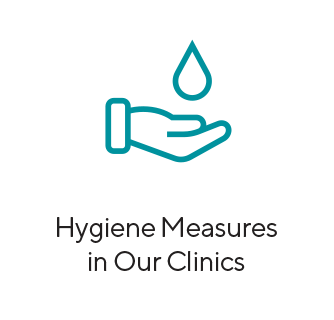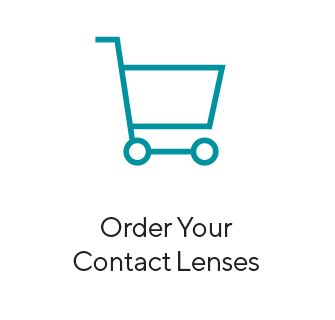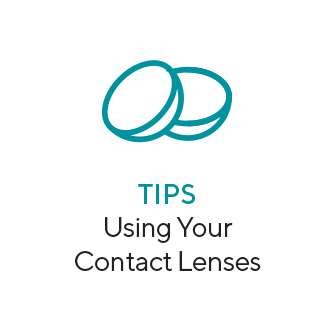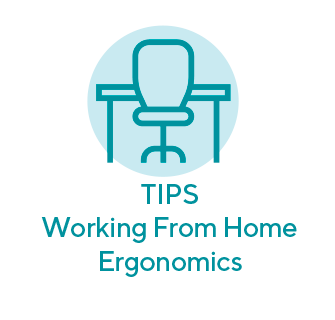Ergonomic Advice for an Ideal Position and Vision While You’re Working from Home
Are you one of the many people who started working from home in the aftermath of the COVID-19 pandemic? This change probably happened very quickly, and your body may be starting to feel the effects of your new work environment. Here are some tips that should help you see your screen better, be more comfortable and avoid putting your body at risk over the long term.
The photos recently shared by La Presse readers probably gave nightmares to many ergonomists. On the other hand, it is possible, using objects that you will have at your disposal in your home, to settle down properly to work on the computer.
Before You Start
If you're lucky, you already have all the equipment you need at home to create a perfectly ergonomic work environment. Otherwise, some household items may be useful to adapt your environment as best as possible.
Ideal Equipment
- Desk (bonus points if it’s height adjustable)
- Chair with adjustable back, height and arms
- Separate screen
- Separate keyboard
- Mouse
- Earphones with microphone
Household Items That Could Help You
- Books
- Rigid box or toolbox
- Cushion or pillow
- Towel
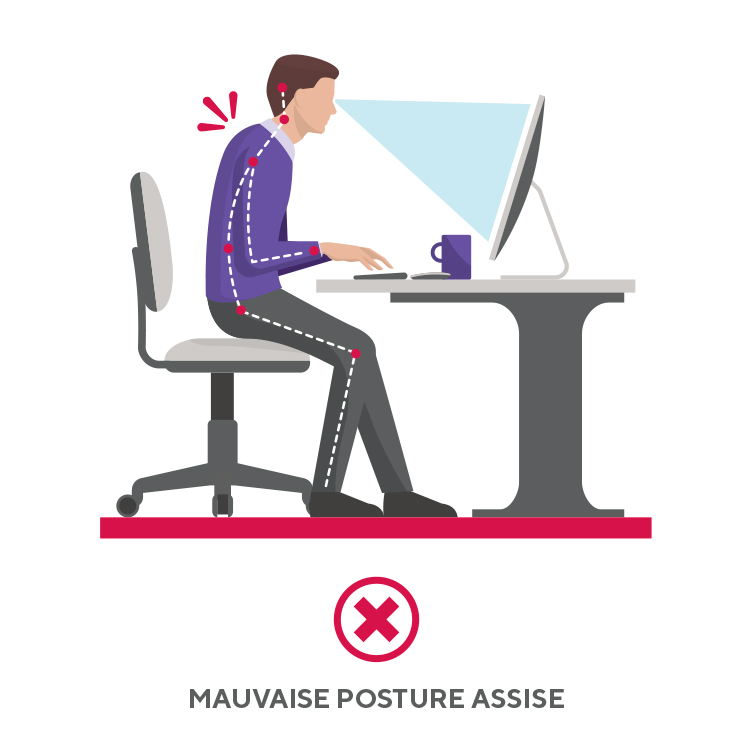
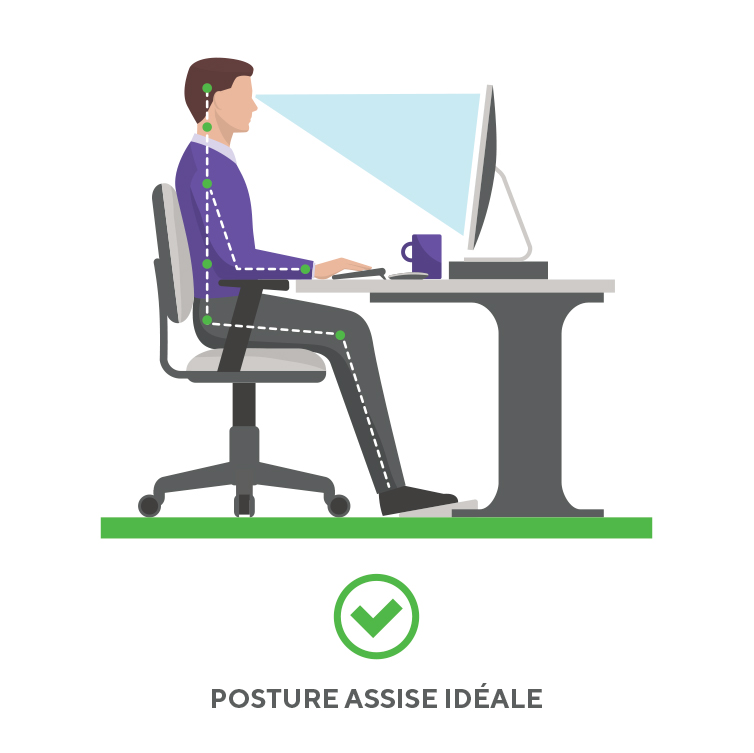
Analyze Your Environment
Start by settling in as naturally as possible with all your equipment. Once your environment is set up, ask yourself the following questions:
Is my back well supported?
The angle of the back of your chair may not be ideal, or your seat may be too deep. If so, feel free to place a cushion or pillow behind your back.
If it's the lack of support in your upper back that’s making you uncomfortable, a rolled-up towel could also help.

Are my shoulders relaxed?
If your shoulders feel tense, your armrests or work surface may be too high. If you can’t adjust the height of your chair or armrests enough, you can try sitting on a cushion to elevate yourself.
If your armrests don’t allow your forearms to be at the same height as your keyboard and mouse, you’ll probably be better off not using them at all (you can even unscrew them from your chair). Instead, move closer to your work surface, where you’ll rest your forearms.

Are my feet well supported and are my knees bent about 90 degrees?
For most people, standard work surfaces and kitchen tables are too high for their feet to rest firmly on the floor while having their elbows aligned with the keyboard and mouse. If this is your case, a footrest will help you. You can use a rigid box you find at home, or even a toolbox! Also try to resist the urge to put your feet on the legs of your wheelchair, which could cause knee and backside pain if done too long.
When I look at the top of my screen, is my chin relaxed and is my neck in its natural position?
In an ideal world, your eyes should be aligned with the top of your screen. If you don't have a separate monitor, you should elevate your laptop (with a stack of books for example) and use an external keyboard and mouse.
If you suffer from presbyopia, you may need to make some adjustments before finding your ideal height to see your screen clearly without lifting your chin and placing your neck in an uncomfortable position. Although progressive lenses are designed to provide good vision at all distances, specialized lenses for office work (such as Home & Office NEO from Nikon, Varilux Digitime from Essilor, iD Space, Screen and Zoom from Hoya or Officelens from Zeiss) will maximize your intermediate vision and make it wider and easier to reach than with your progressive lenses.
Can I read easily on the screen, with my back supported, without stretching my neck?
If you tend to move your head forward while reading, your screen may be too far away. A good reference distance is 70 cm, or roughly the length of your arm and with your hand outstretched. If your eyes are still straining at this distance, this may be the time to get an eye exam.
Do I experience symptoms of digital eye strain?
The most common symptoms associated with digital eye strain, also called computer vision syndrome (CVS), are eye pain (or a feeling of eye fatigue), headaches, blurred vision, or dry eyes.
Even with your screen’s height and distance properly adjusted, symptoms may persist. The 20-20-20 tip remains one of the best ways to combat CVS:
- Look 20 feet (6 meters) away
- For 20 seconds
- Every 20 minutes
You can take advantage of this break to move your neck in half-circle motions and relax your shoulders. If you’re having trouble remembering to take a break every 20 minutes, you can use your phone’s timer or simply Google “20-minute timer” and leave the tab open.
Certain anti-reflection treatments (such as Seecoat Blue Premium from Nikon, Crizal Prevencia from Essilor, Recharge from Hoya and Duravision Blueprotect UV from Zeiss) can also be added to your glasses to help reduce the effects of digital eye strain by blocking harmful blue light. These anti-reflective treatments can also help maintain good eye health.
Am I dazzled or bothered by a light reflection on my screen?
As much as possible, avoid standing with your back to a window. Facing a window can also be bothersome in the long run. This is why, in most work environments, desks are placed perpendicular to the windows. If your home configuration requires you to stand with your back to a window, at least close the curtains.
Choose a bright room that provides uniform lighting, instead of one very strong light source. Also make sure that your light sources do not create disturbing reflections on your work surface. Finally, if you work in the evening, adjust your lighting and the brightness of your screen as the sun goes down.
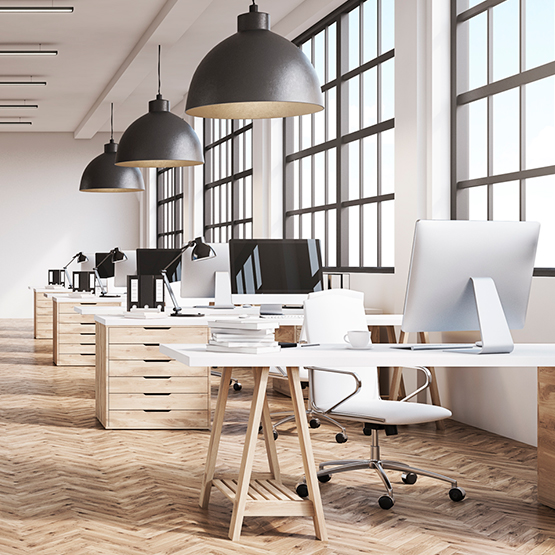
Is my work surface large enough to allow me to reach all my documents and work tools?
If your desk isn’t large enough and you have no other space available where you can set up, you can add secondary surfaces. A small filing cabinet, a coffee table or even an ottoman could allow you to have your work tools close at hand.
Am I comfortable when I make calls?
When you’re talking on the phone without headphones and you need your hands, you’ll probably tend to hold the handset between your cheek and your shoulder, which will create a lot of tension in your neck, shoulders and upper back. Invest in headphones with a microphone to regain your freedom of movement.
The importance of moving
No matter what improvements you make to your work environment, it will always be important to change positions regularly. Get up at least once every hour and take the opportunity to stretch. You can also change things up by moving your laptop to another area for a little while. Be creative!
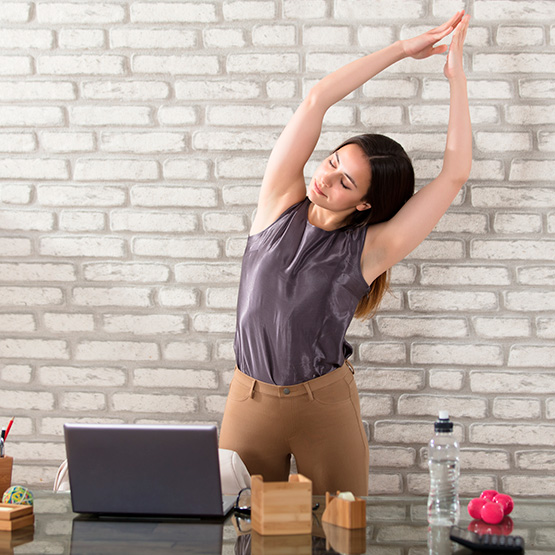
- Ergonomic
- Remote working





